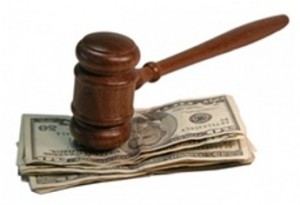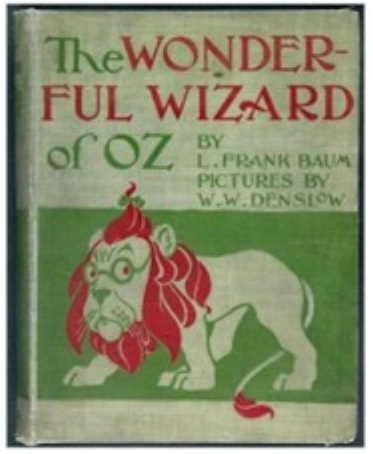| by Liz Holderman (09/14/10). |
 Did you know that a single item can have several different appraised values? In fact, when you “Ask a Worthologist” to value an antique or collectible, you will receive three separate values, in addition to some interesting history, background and facts about the item. Why three values? Because professional appraisal guidelines state that appraised values are always dependent on the reason for the appraisal.
Did you know that a single item can have several different appraised values? In fact, when you “Ask a Worthologist” to value an antique or collectible, you will receive three separate values, in addition to some interesting history, background and facts about the item. Why three values? Because professional appraisal guidelines state that appraised values are always dependent on the reason for the appraisal.
To help understand the difference in values, we’ll take a first edition of “The Wonderful Wizard of Oz,” for an example. That book was written in 1899 by L. Frank Baum, illustrated by W. W. Denslow and published in 1900 by George M. Hill. Approximately 35,000 copies were produced, with some variations (or states) based on corrections and changes made during the print run. For our example, we’ll assume that the book is in very good condition, has not been restored and is a second state.
Let’s say you want an appraisal of the book for insurance purposes in case your house burns down or the book is stolen. In that case, the appraiser must determine what it would cost for you to replace the book (in a similar condition and state). The appraiser will have to search bookseller catalogs, advertising lists and antiquarian bookstores to see who has the title for sale and what they are asking for it. The result is called “Replacement Cost” and would probably range between $5,000 and $10,000.

The first edition of L. Frank Baum's "The Wonderful Wizard of Oz" in very good condition. An unrestored second state can be valued three different ways, ranging from $10,000 to $1,000. This is common for all appraised items.
Alternatively, let’s say you want an appraisal for that book because a) you are going to donate it to a charity and want to deduct the donation on your taxes, or b) you have inherited it from a relative and you have to pay estate tax on the value.
The Internal Revenue Service requires that this appraisal be based on “Fair Market Value.” That means that the appraiser must research past comparable sales for the book and determine what it actually sold for in a fair and open market (where both the buyer and seller were fully knowledgeable about the book and could transact at their discretion). Current market trends, buyer’s premiums, shipping costs, selling locations, dates of sale and other factors all come into play. “Fair Market Value” is also used for appraisals when an equitable division of assets is required (such as in a divorce case). In WorthPoint terminology, this is called “Auction Value” and would probably range from $3,000 to $5,000.
Now, let’s say you just want to know the value of the book, for no other reason than your own information—maybe you are thinking about selling it. Guidelines state that somewhat less research is required. If you took this book to a volume used book dealer, he would not pay you “Fair Market Value” for the book because he needs to be able to (hopefully) resell it, cover his expenses and still make a profit. Instead, he will pay you “Market Value” for the book. This is what you will get if you don’t want to research, list with an auction house, package and ship, advertise, pay seller’s fees, rent space at a retail venue or other such efforts. WorthPoint calls this “Quick Sale” and it would probably be around $1,000.
Believe it or not, there is actually another legitimate appraised value that is even lower, although WorthPoint does not include it in their valuations. If the courts seize your assets due to bankruptcy or other legal action, your book might be sold in a distress sale for pennies on the dollar. In this case, an appraisal might be required to determine liquidation value.
Liz Holderman is a Worthologist who specializes in collectible books.

No comments:
Post a Comment